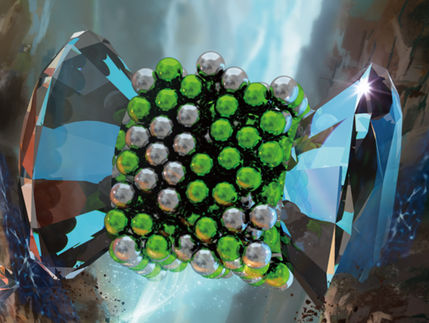The Arabic spring: Market outlook by Camelot Management Consultants on the transformation of the Middle East region into a leading global chemicals hub
Advertisement
The global chemical industry is changing dramatically. While the worldwide chemical production increased by almost 40% over the last 10 years, 95% of this growth was concentrated in developing countries. The Middle East chemical industry is at the top of this development: it will continue to grow by approximately 20% per annum and become one of the leading global chemical hubs. In 2015 the biggest Saudi chemicals producer, Sabic, might, in the most optimistic scenario, even measure up to the leading global chemical company BASF in terms of sales in the chemical sector.
„With continuous growth rates of more than 20% and an estimated investment volume of USD170 bn over the next five years the Middle East is about to become one of the global hubs of the chemical industry“, says Dr. Josef Packowski, managing partner with Camelot Management Consultants. The landscape in the industry is changing: The leading chemical company BASF estimates the global chemical demand to increase by 8% till 2020, but to decrease by 6% in Western Europe. The Gulf region will continue to grow rapidly and become one of the most important global hubs for the chemical industry.
Sabic: The Middle East chemical champion on its way to the top
By the end of 2015 one of the two biggest chemical producers of the world in terms of chemical sales could be located in the Middle East: Sabic. “The growth of the region is impressive,” states Dr. Axel Neidlein, partner with Camelot Management Consultants. “With the leading regional chemical company, Sabic, a global champion has emerged - and overtaken every international competitor except for BASF within quite a short period of time. Extrapolating the growth rates of the past years Sabic might, in the most optimistic scenario, by 2015 even outperform BASF in terms of chemical sales by almost USD10 bn . But it’s likely that Sabic’s growth will slow down in the coming years and sales will reach about USD 60 bn by 2020. But no matter how high Sabic’s chemical sales really will be – the rise of the region is impressive anyway and will have a strong impact on fast growing markets like the APAC region, China and the established markets such as Europe and North America.” Sabic achieved this through organic growth along with M&A of major competitors.
The company is of course advantaged by their proximity to raw materials. But there are also challenges ahead: The raw-material advantage (Ethane versus Naphtha) is decreasing and the Saudi government expects further downstream diversification towards specialty and performance chemicals in order to profit from higher parts of the value chain as well as to create jobs for the highly qualified population. Neidlein: “If the government wants to establish the region as one of the leading global chemical hubs it has to keep on pushing downstream diversification, attract more international investors, and create jobs. Human resources will be the key for an economy also based on knowledge and innovation – not only on oil.






















































